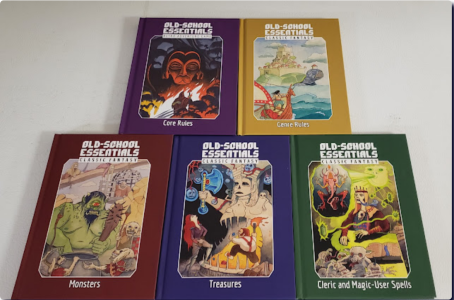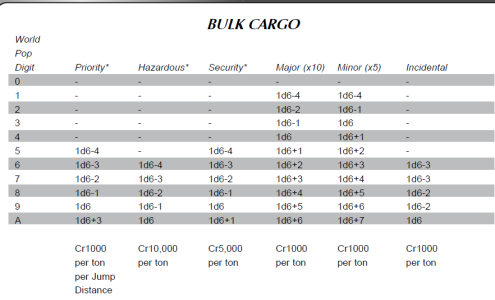Supplement 4.
But MT is more than just consolidating them; it's use of many more cascades makes a huge difference in number and magnitude of choices in Character Gen.
IMO, there's WAY to «BLEEP»ing much striker outside the guns.
Yes, it is different.
CT has a single mechanic for combat, but has unique rolls for various things for much of the its non-combat skills. Many GM's defaulted to 8+ on 2d6+skill... but that's not actually in CT anywhere except combat.
MT has a
task system: It has a unified method for resolving most needed in-play rolls made by players...
The difficulty labels are a key element, as is the time component.
It defines a task roll as 2d6 + AssetA + AssetB; each asset may be a skill level or 1/5 an attribute (round down). It defines the number of time increments taken as 3d6 - (AssetA + AssetB)
Note: the maximum asset sum is 8; if it would be greater (EG 7F7777 skill 7 gives +10), use 8 instead.
Extra time is shift down one level, but double the time roll; hasty is up one level, but double the assets for subtraction from time.
The Difficulties
| Label | TN | Explicit? | Joe Normal 777777 Skill-1 |
| Automatic | -1 | No | no chance of failure, even hasty |
| Simple | 3 | Yes | Can only fail if hasty |
| Routine | 7 | Yes | can't fail if taking extra time |
| Difficult | 11 | Yes | Extra time can still fail |
| Formidable | 15 | Yes | Extra time required to succeed (as 2d6+2 is max 14) |
| Impossible | 19 | Yes | Joe Cannot succeed even with extra time; Extra |
| Absurd | 23 | no | max on 2d6+8 = 20; with extra time, needs 19, so the truly elite (asset sum ≥ 7) |
| 27 | no | max_roll+∑assets = 20 vs extra time needing 23, no one can do it. |
Note that the labels are very reasonable for Joe Normal.
Note that the mishap rolls use the same progression of TN...
An exceptional result is 2 points past success or fail...
So Exc. Success = ≥TN+2
simple Success = TN or TN+1
simple Failure = TN-1 or TN-2
Exc Failure (and mishap check) ≤ TN-3
Yes, it's more complicated than the typical GM done unification to 2d6 ≥ 8+... but it also does more. It's also quite different from CT RAW by making 1 level of skill always equals 1 point of modifier in a given asset; it is, however, doable to use the same asset twice instead of two different assets. It creates a language of play that, in many cases, speeds up play by reducing the granularity
It covers time, it handles unskilled attempts in a uniform manner, and it's got a good shorthand....
To hit at striker long range: Difficult, Dex, Weapon, action (absolute).
An aim is just extra time... 2 actions, instead of one.
Further, players always know what to roll: 2d6 of color a, 3d6 of color b. If the GM isn't using time on a given task, the 3d6 are simply ignored.
The benefits are many... but the drawbacks include the tendency to generate lists of tasks, loss of granularity, several more things for players to memorize, sometimes also rigidity of thought, lowered impact of skill levels vs CT in several cases, and potentially slowing play


